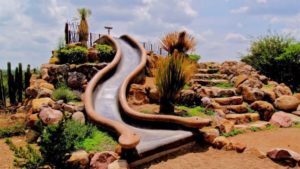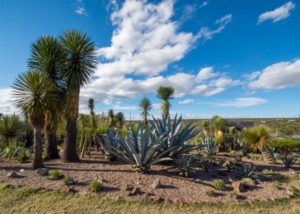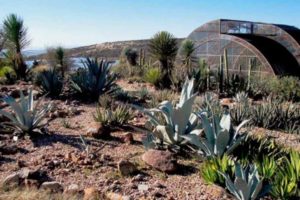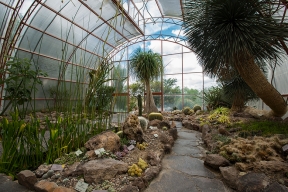From desert to oasis: Charco del Ingenio recovers the green treasure of San Miguel
News Category: News, Announcements, Community News, and General Discussion
-
El Charco del Ingenio has been a protected area for 30 years and has become the main lung of San Miguel de Allende. Now they have also achieved the support of Conacyt to determine this place as the most important ethnobotanical garden in Guanajuato and an example to follow in the country.
El Charco del Ingenio is a project of the organized civil society, which for 30 years has had no governmental participation or interference at any level. It is a 67-hectare project that began with the dream of restoring the property.
Before starting the project, the territory had been impacted by overexploitation, overgrazing, very compacted land and hillside agriculture that left a lot of soil loss. People used to say that only stones grew here and today, 30 years later, from an aerial view you can see the impact of the restoration, which has not only been on the vegetation -which we did dedicate ourselves at the beginning to restoration and ecological revaluation- but also, with the privilege for native species, it has been transformed into a wildlife refuge”, explained Mario Hernández, general director of Charco del Ingenio.

Today the place has 230 species of birds, including passengers and residents, in a place where every year the monarch butterflies arrive on their way to the State of Mexico. There are also coyotes, raccoons, cacomixtles, gray foxes, and wildcats.
“It is a wildlife sanctuary that is extremely important and today, with the constant change of land use, we find that Charco del Ingenio is the great lung of San Miguel de Allende.”
Inheritance of the Guanajuato semi-desert

The general director of the place shared that the National Council of Science and Technology (Conacyt) launched a call in 2019 for the generation of a network of ethnobotanical gardens, that is, gardens that can show the use and exploitation of plants in our cultures.
“Derived from this we made a project to be able to compete and Conacyt recognizes Charco and gives us the resource to be able to make adjustments towards an ethnobotanical garden. Afterwards we have made a series of activities and products that we are showing off in 2021, among them, the transformation of spaces into medicinal plant gardens, rituals, nopales and agaves gardens, educational materials, video materials and an impressive documentary that we will present in January under the name of ‘Biocultural Heritage of the Gunajuato Semi-Desert'”.
Mario Hernandez said that they have also made educational materials, manuals in the communities of three municipalities (San Miguel de Allende, Tierra Blanca, and Victoria, where Otomi is still spoken), and for that reason, now Conacyt is taking the model of Charco del Ingenio as an example to follow for a whole national network.
Hernández added that it was the project that won in Guanajuato and that this is the first time that Conacyt has granted them such recognition.
“In 30 years, everything we have achieved at El Charco has been in relation to two elements: the collaboration and credibility we have with the national and foreign community; and two, with our own efforts and fundraising activities.”
Revaluing the green treasure

The general director of Charco del Ingenio explained that the social benefit of this project is the revaluation of the use of the immediate vegetation: the plants of Guanajuato, from medicinal and the two species of agave that occur naturally.
“We collaborated with researchers from the University of Guanajuato, who have experience in the written system of Otomi, and with them we are undertaking actions to rescue the language. Next year we will have a diploma course to learn how to speak and write Otomi.
He added that a network of intellectuals is being created, starting from the biocultural or ethnobotanical: “we are talking about all the knowledge associated with the vegetation that surrounds us, a knowledge that serves us. Once we have it understood, to understand the environmental services it generates for us: such as temperature decrease, food by season and species”.
“Within the framework of this project and a pandemic, we are understanding that we had forgotten about the native. If in the future we have a pandemic again, the only ones who are going to survive are those who have the knowledge of natural resources. We have privileged having the most modern telephone, entering the clothing industry that exploits natural resources, and we have forgotten about these natural spaces that are creators of life”, he concluded.
El Charco del Ingenio is now open to the public again, with an entrance fee of 50 pesos.


Leave a Reply